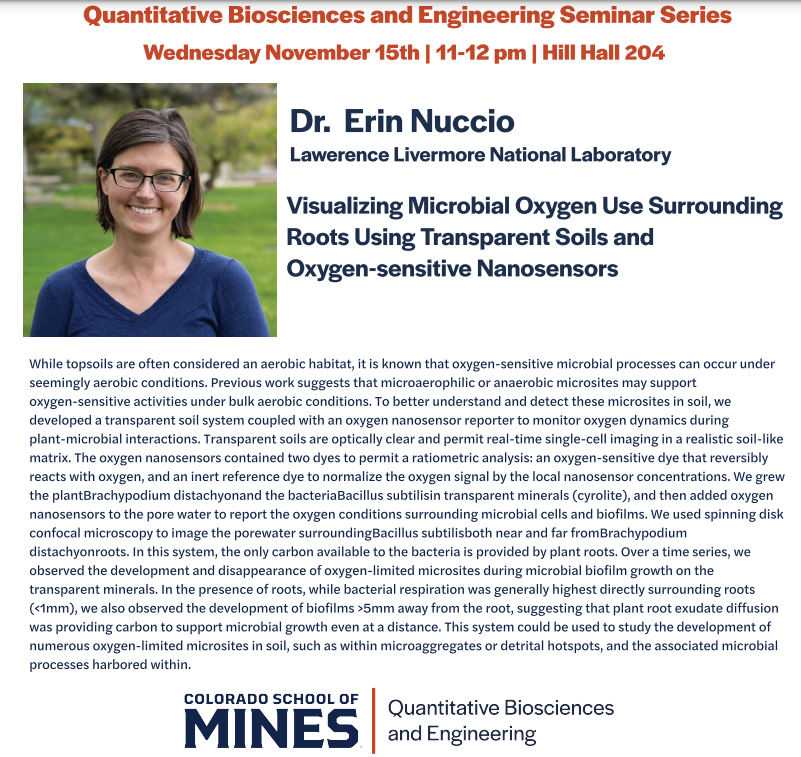
- This event has passed.
QBE Seminar Series – Dr. Erin Nuccio – 11am
November 15, 2023 @ 11:00 am - 12:00 pm
Free
Visualizing microbial oxygen use surrounding roots using transparent soils and oxygen-sensitive nanosensors
Erin Nuccio, Megan Kan, Edith Lai, Josh White, Sam Saccomano, Kevin Cash, Ted Laurence, Peter Weber, Ty Samo
While topsoils are often considered an aerobic habitat, it is known that oxygen-sensitive microbial processes can occur under seemingly aerobic conditions. Previous work suggests that microaerophilic or anaerobic microsites may support oxygen-sensitive activities under bulk aerobic conditions. To better understand and detect these microsites in soil, we developed a transparent soil system coupled with an oxygen nanosensor reporter to monitor oxygen dynamics during plant-microbial interactions. Transparent soils are optically clear and permit real-time single-cell imaging in a realistic soil-like matrix. The oxygen nanosensors contained two dyes to permit a ratiometric analysis: an oxygen-sensitive dye that reversibly reacts with oxygen, and an inert reference dye to normalize the oxygen signal by the local nanosensor concentrations. We grew the plant Brachypodium distachyon and the bacteria Bacillus subtilis in transparent minerals (cyrolite), and then added oxygen nanosensors to the pore water to report the oxygen conditions surrounding microbial cells and biofilms. We used spinning disk confocal microscopy to image the porewater surrounding Bacillus subtilis both near and far from Brachypodium distachyon roots. In this system, the only carbon available to the bacteria is provided by plant roots. Over a time series, we observed the development and disappearance of oxygen-limited microsites during microbial biofilm growth on the transparent minerals. In the presence of roots, while bacterial respiration was generally highest directly surrounding roots (<1mm), we also observed the development of biofilms >5mm away from the root, suggesting that plant root exudate diffusion was providing carbon to support microbial growth even at a distance. This system could be used to study the development of numerous oxygen-limited microsites in soil, such as within microaggregates or detrital hotspots, and the associated microbial processes harbored within.
